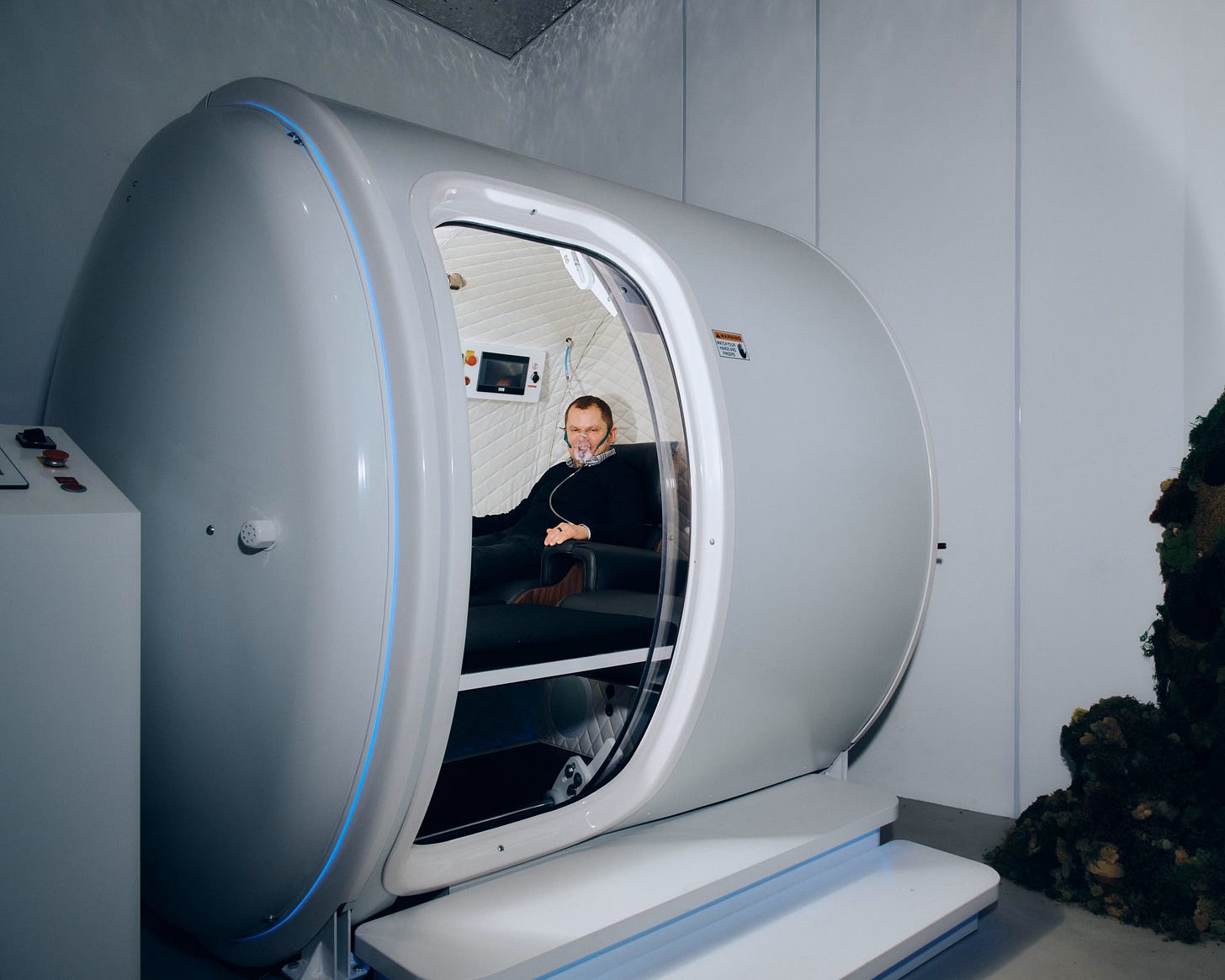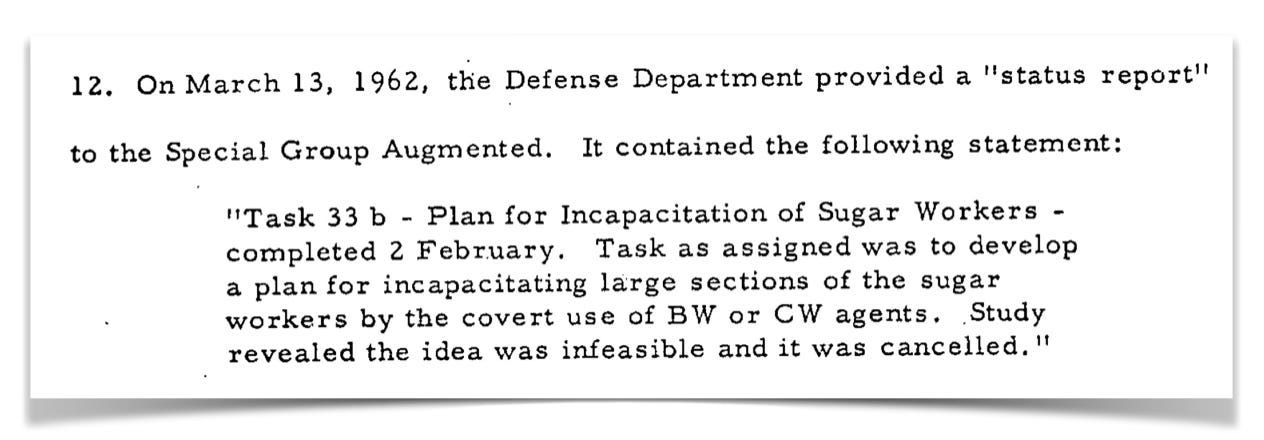This week’s Grounding is a Special Edition on biotech (see previous Special Edition Weekly Groundings here, here, here, here, here, and here).
For those of you who are new here, Weekly Groundings are published every Friday to highlight the most interesting news, links, and writing I investigated during the past week. They are designed to ground your thinking in the midst of media overload and contribute to Handful of Earth’s broader framework. Please subscribe if you’d like to receive these posts directly in your inbox.
If you’re already subscribed and want to help the publication grow, consider sharing Handful of Earth with a friend.
“Bankruptcy, Privacy, 23andMe”
At
, analyzes 23andMe’s bankruptcy and the massive risks to genetic privacy embedded in the platform: “Once valued at more than $6 billion, 23andMe saw 99% of its market capitalization evaporate after medical applications failed to pan out and hackers in 2023 absconded with the data of 7 million clients. (23andMe had hoped its data would revolutionize patient-specific medical treatments, drug development, and preventative care.) Clients voluntarily gave 23andMe their genetic data, plus names, addresses, emails, birthdates, lifestyle info, and medical and family health histories. The theft raised fears over how such data could be used to harm individuals, families, and communities. The bankruptcy court will consider the disposition of data and algorithms, along with future privacy status. Time will tell whether legal guarantees of privacy mean anything.”Graboyes details the many potential nefarious uses of DNA sales and concludes that “While I can only offer a layman’s conjecture, I suspect it’s wise to hit ‘delete’ but not to count on the success of that deletion. Your data likely resided on multiple machines, and hitting ‘delete; often hides data without eradicating it. Given the technology, a legal right to delete your 23andMe data may prove as meaningful as a legal right to erase indelible ink with a pencil eraser. The episode does suggest the wisdom of thinking long and hard about which personal information you provide to strangers with server farms.”
“Should Human Life Be Optimized?
investigates the industry of polygenic embryo screening for The New York Times: “In the United States, despite more than $1 billion invested in fertility-focused start-ups in the past decade, there is remarkably little regulation or even basic public scrutiny of what practices are acceptable. Instead, venture capital and private equity firms have spurred the creation of technologies and innovations in the field, with no mechanism in place for oversight. Today the United States is known for its wide range of available services, which include sex selection and even eye color choice, as well as polygenic embryo screening, and has become a destination for fertility patients from around the world. But the innovations that arise from this freewheeling environment can shape the way we think about embryos and even change how we treat them, sometimes before we’ve realized that such a shift is unfolding.”She writes that, “with the advent of powerful statistical techniques that can analyze huge databases of genetic information, several American companies have started offering P.G.T.-P., which screens embryos for their polygenic risk scores. The technology has typically been used for adults, ostensibly to assess their probability of developing specific conditions. For example, people whose test shows a high risk score for heart disease might change their diet or increase their physical activity. The risk scores come from what are called genomewide association studies, which identify which of hundreds of thousands of genetic variants are statistically linked with a specific condition or trait. While tests for single-gene diseases can conclusively verify the presence or absence of a specific genetic mutation, these scores can assign only probabilities and do not account for environmental or other factors...Polygenic embryo screening has not yet gained widespread acceptance, but one representative survey of Americans conducted in 2022 found that a majority said they had no moral objection to using P.G.T.-P. for medical and nonmedical traits and nearly 4 in 10 said they were ‘more likely than not’ to use it if it would slightly increase their child’s likelihood of getting into a top college.”
Sussman concludes: “Some argue that these technologies are simply options, ones we are free to use or not. But regardless of whether we use them, their mere existence will alter our relationship to embryos. By animating embryos and enabling a close-up encounter with them, time-lapse microscopy renders them more human than they already are; polygenic embryo screening reduces them to a set of probabilities. I am not convinced that not using such technologies leaves one untouched.”
“Biohacker Bryan Johnson: ‘The Enemy Is No Longer Each Other. The Enemy Is Death’”
The Financial Times profiles longevity influencer Bryan Johnson: “Before we met, I put Johnson, a former Mormon missionary, in the camp of agitators against traditional institutions who, ironically, tend to be tech multimillionaires. I’m not let down when he insists he’s hell-bent on overthrowing the systems that made him. Johnson, who has several million social media followers, says he wants Don’t Die to be a ‘religion’ and ‘the most influential ideology in the world by 2027,’ replacing capitalism.”
The article reports: “Thanks to potential AI breakthroughs, Johnson, 47, posits that we are part of ‘the first generation who won’t die.’ He recently claimed to have reduced his biological age by five years, to 42, but ‘the goal is to make my body age 18.’ To do this, he’s drawn up a strict regimen that borrows from existing medicine, as well as edgy or little-tested technology, drugs and scientific literature. He’s spending millions to measure everything that might make his body age faster, from water quality to food toxins. He’s also charting every health indicator in his body—from gut microbiomes to night-time erections—as he records his journey back to youth.”
“Johnson’s dogma has parallels with Mormonism, with its inherent gospel of self-improvement towards godliness over the span of eternity. He concedes that having left his Mormon community in rural Utah, Don’t Die is ‘an answer to my quest of trying to figure out how to understand reality.’”
“Want Better Health and Status? For $250,000, Longevity Clinics Promise Both”
Beyond professional longevity missionaries like Johnson, the industry has an increasing base of elite clients: The Wall Street Journal reports that “For up to six figures a year, longevity clinics promise to buy their patrons longer, healthier lives. For now, they’re conferring something maybe just as valuable: status. Plenty of people are deciding the hefty fees are worth it. High-end medical clinics aimed at optimizing their clients’ health for years to come are proliferating, as demand for their often-experimental treatments grows. A few hundred such clinics now operate in the U.S., longevity doctors and market researchers estimate. Most of them are in affluent areas in California, New York and Florida, according to research and media company Longevity.Technology.”
“Longevity clinics can charge hundreds to thousands of dollars for à la carte services such as biological age-testing, preventive body scans or plasma exchange and, at the highest end, $100,000 or more for annual memberships. At $250,000 a year, for instance, Extension Health in downtown New York now offers top-paying clients a “Superhuman” package by invitation only. Robin Leigh, a chef-turned-restaurateur who alternates between London, New York and Miami, used to belong to the private social club Soho House. Now, he says, he would rather do hyperbaric oxygen therapy than mingle with influencers over Martinis. He estimates he spends $120,000 a year on longevity-related care in those cities for treatments such as red-light therapy and stem-cell injections for his knee pain.”
“Operation Mongoose 1962”
At
, reports on “Operation Mongoose,” a covert CIA program against the Cuban government: “Mongoose projects were known to very few people and were rarely written down. The preliminary list included plots to weaken the Cuban economy and to assassinate Fidel Castro. Fort Detrick’s Special Operations Division worked on many of the gadgets that supported these plots, such as cigars poisoned with botulinum toxin, a scuba-diving suit sprayed with the bacteria that causes tuberculosis, a booby-trapped conch shell placed on the sea floor, and an exploding cigar.”Newby highlights one Mongoose operation that entailed air-dropping ticks on sugarcane workers in hopes of debilitating the Cuban economy.
What grounded your thinking this week? Share in the comments.






